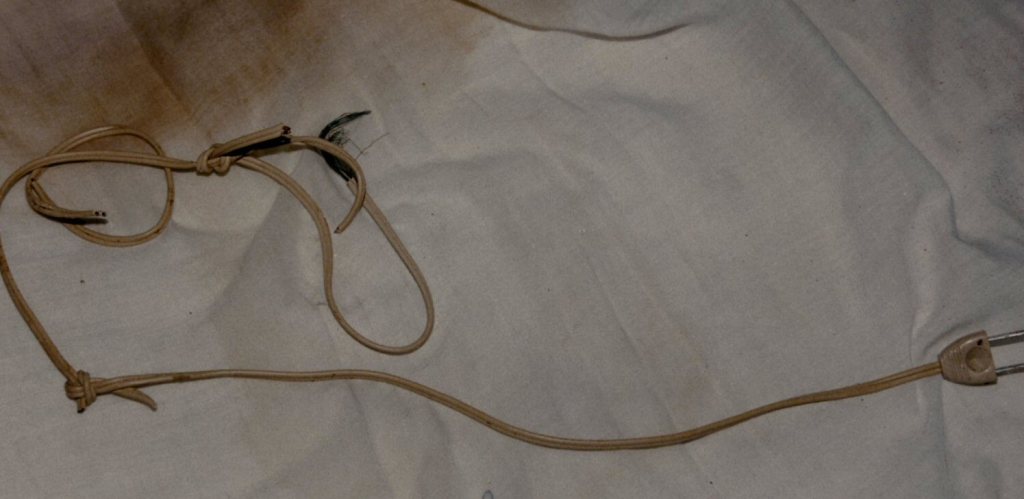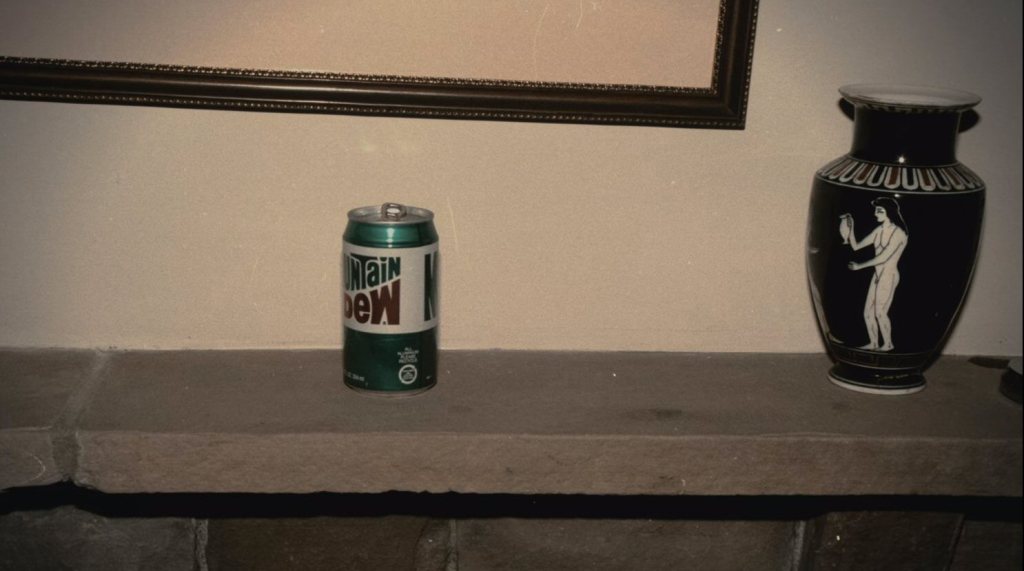By Venning
In this article, we examine the tragic attack on Mabel “Ma” Bell and Florence Nettie Lang – two elderly sisters brutally assaulted in their Monrovia home in late May 1985. Although Richard Ramirez was later sentenced to death for the crime, a closer look reveals serious evidentiary gaps, weak forensics, and questionable timelines that cast doubt on his guilt. Most of our information comes from Ramirez’s 2008 Federal Habeas Corpus petition and its supporting documents.
In birth and death records, Florence’s name is given as “Florence Nettie Lange” – Lang seems to be a mispelling. Because her name is given as Lang in all appeals documents, the media and books, we stick to “Lang” to avoid confusion.
83-year-old Mabel “Ma” Bell and her disabled sister Florence Nettie Lang, 79, were discovered comatose in their Monrovia bungalow on 1st June 1985. It is likely that their attack occurred in the early hours of 30th May, due to dated evidence at the scene: a TV guide had been turned to a page showing late night on 29th, to noon on 30th and Mabel Bell’s diary had been filled in for the 29th. The emergency room doctor, Michael Agron MD believed the injuries were two days old, when observing the sisters on 1st June (Habeas Corpus pg.63). During the trial, Sergeant John Yarbrough testified that the sisters’ clock was stopped on 30th May at 05:29 (Philip Carlo pg. 373).
The sisters were discovered by Charles Valenzuela, their gardener. Two newspapers were left in their driveway, perhaps from 30th and 31st May (the Petition does not say). Mabel Bell was lying on the floor, comatose, with a table on top of her chest, her head severely beaten to the point that brain tissue protruded. She had lacerations and a blistered burn mark below her right breast, thought to be an electrocution injury. A pentagram had been drawn on her leg.
Florence Lang was unresponsive on her bed, and like her sister, in a coma. Her hands had been tied behind her back with electrical cord and her ankles were bound with electrical tape. A pentagram was drawn on the wall above her bed. She too had sustained head injuries and ligature marks. It appeared that she had been sexually assaulted with an object, possibly with a hammer that was used to beat them.
Physical Evidence
- Rape kit taken.
- A bloody hammer on the dressing table.
- Electrical tape on the victims.
- Severed wires used as ligatures.
- Hair on the electrical tape and hammer.
- A partially eaten banana.
- A Mountain Dew can covered in hand prints.
- Fabric marks and a partial shoe print on a clock.
- Palm prints.
- A pentagram on the wall and leg of Mabel Bell.



Was There Proof it was Richard Ramirez?
The rape kit yielded no semen or identifiable forensic evidence (at this time, PGM markers were usually examined because this was pre-DNA). The injuries suggested a sexual assault with an object, rather than penile rape.
There were no fingerprints on the hammer that could tie it to Ramirez. There is no way of knowing who ate half a banana and the prints on the Mountain Dew can turned out to be glove prints, which were not admissible. No saliva tests were taken from the can. Other palm prints were not thought to have come from Ramirez.
The hair on the hammer and the electrical tape around Florence Lang’s legs did not appear to have been Ramirez’s, nor were the pubic hairs in the bed. Some head hairs were either blonde or light brown according to the forensic investigator, Melvin Kong. These seemed to match hairs at other crime scenes but for some reason they were not compared with each other, and only with Ramirez’s hair:
“Under cross-examination, [sheriff’s criminalist Melvin] Kong said blond hairs found at three or four crime scenes were not tested for similarities.”
– Daily Breeze, March 1986.

The Assumption of Avias
Gerald Burke, the prosecution’s expert witness from the Los Angeles County Sheriff’s Department Crime Lab, initially said the partial print was different from the Avia prints at the Zazzara crime scene. Burke changed his mind two months later (in early July) and decided that it was made by an Avia.

Ramirez’s defence attorneys made no effort to challenge the prosecution’s shoe evidence. In 2004, for the Federal Habeas Corpus, Ramirez’s appellate lawyers retained shoe forensics expert Lisa DiMeo.
“The concentric circle pattern on an electric clock was consistent with the unique circle pattern found on the sole of an Avia shoe. Burke was unable to determine the model or size. In his early analysis, Burke found dissimilarities in the sole patterns of shoe impressions found at the Zazzara and Bell and Lang scenes but later changed his mind after obtaining flat outsoles from Avia.”
– Declaration of Lisa DiMeo, Document 7.19
In her second declaration, DiMeo said the concentric circles lacked sufficient detail to conclude they were made by a specific model of Avia.
“Based on the lack of sufficient detail, it was not possible to eliminate any Avia athletic shoe model, size or style, or any manufactured sole that exhibited a similar concentric circle pattern as the source of the impression.”
– Supplementary Declaration of Lisa DiMeo, Document 7.20.
This is important, because the prosecution’s argument was that shoe prints at seven crime scenes were made by a black Aerobics model 445B, which was incredibly rare. To this day, lead detectives refer to them as “unique” as well as newly invented. In fact, there are many variations of this sole design and they had been in circulation since 1981. Moreover, DiMeo revealed that:
“Mr Burke testified to finding 19 different manufacturer’s shoes that exhibit concentric circles in the ball of the foot area.”
– Supplementary Declaration of Lisa DiMeo, Document 7.20.
If the Avia sole design was not as rare as the prosecution claimed, and shared attributes with 19 different brands of sneaker, then the pool of potential culprits increases to tens of thousands. Furthermore, other lines of Avia shoes also share a concentric circle design, for example those featured in this post, about a break-in at a police officer’s house during the murder spree. DiMeo rules the Bell and Lang shoeprint inconclusive, and she emphasised that there was no scientific connection between Richard Ramirez and shoeprints at murder scenes.
Why Was Ramirez Suspected of the Bell and Lang Incident?
Ramirez had become a suspect early on, simply because he had a propensity to draw pentagrams. After being stopped by traffic police for running a stop sign on 15th June, Ramirez drew the symbol in dirt on a car, before escaping on foot. Thinking this suspicious – the car was stolen – the police officer impounded the vehicle and the Los Angeles County Sheriff’s Department asked the Los Angeles Police Department to hold it for prints, which melted away in the sun before the LASD could examine them. Ramirez left his dental appointment card inside, so the police were able to trace his alias Richard Mena to a dentist, who provided them with a description.
Although Ramirez’s appearance did not match witness or survivor descriptions (see posts on Okazaki, Yu and Doi), the police decided – based on the pentagram – that Richard ‘Mena’ was a person of interest. Just one victim (Khovananth, 20th July) would come close to describing ‘Richard Mena’ and the police felt this was enough, but that is another story.
Why Was Ramirez Convicted if the Evidence Was So Weak?
Simply put, his defence attorneys were inept and failed to argue against most of the prosecutor’s evidence. They were unable to secure funding because they were not sufficiently qualified under California law to take on a case of such magnitude. They were hoping to be paid by a movie and book deal that never materialised and ended up essentially working pro bono for most of the proceedings. They did not question the hairs found on the electrical tape that did not match Ramirez.
For Bell and Lang, the alibi the attorneys had developed for Ramirez collapsed. They argued that Ramirez was in El Paso when the crime took place, but he was proven to have attended the dentist on 30th May – the same day of the attack. This same alibi had been used for the Kyle Incident so had already failed – yet they brought it back for this case hoping for a different result.
Stolen Property:
A stereo/cassette player belonging to Mabel Bell and Florence Lang was recovered from an associate of Ramirez, a ‘fence,’ Felipe Solano. There is more to this story than meets the eye – in fact, the Solano angle is often omitted from documentaries. In court, Felipe Solano’s testimony unravelled, when it was revealed he was protecting multiple criminals – one of these could have committed some of the Night Stalker crimes, but the police and prosecution did not investigate this. There are so many questions that need answering in regard to Felipe Solano and the network of burglars.
According to Philip Carlo’s biography, a burglar associate of Ramirez, Sandra Hotchkiss, claimed that Solano was beaten up by police before being questioned about his connection to Ramirez (Carlo, pg. 370). She tried to tell the District Attorney and claimed this beating was recorded on tape but the tape was never presented as evidence and the police denied the beating.
Ultimately, the chain of custody of the stolen items was never established, none was recovered from Richard Ramirez and his fingerprints were not found on any of them.
Documentary Inaccuracies:
The Netflix documentary claims the stereo was recovered from Jesse Perez, but the 2008 appeal and a press report from the preliminary hearing claim Solano had it (habeas corpus pg. 436). Law enforcement and the prosecution were all aware of Solano and Perez’s illegal activities – as well as other burglar associates, but only pressed ahead for Ramirez’s conviction.
So, we are left with the unproven – and inconclusive – Avia print, the circumstantial evidence that Ramirez liked to draw pentagrams, and testimony from criminals – one of whom was impeached (Solano). This means there was reasonable doubt as to Richard Ramirez’s guilt. Because the cases were not separated into different trials per their crime category, it had a cumulative effect on the jury – plus the prosecution argued in bad faith that there were patterns between the crime scenes, despite police arguing that Ramirez had no modus operandi.
Illogical Logistics
As mentioned, Ramirez was confirmed to have visited the dentist on 30th May 1985 and was reportedly seen in El Paso the day before by his father and a family friend. If those accounts are accurate, he would have had to travel nearly 800 miles by coach overnight to reach Los Angeles in time for both the Kyle and Bell/Lang attacks – a highly demanding timeline.
The ‘Night Stalker’ would’ve needed to travel about 13 miles from the 6th Street bus station in Downtown Los Angeles to Burbank for the Kyle attack, which began around 4am and lasted approximately two hours. From there, he would have had to drive another 22 miles east to the Bell and Lang residence in the foothills – a 20-25 minute trip. But as discussed in the Kyle article, the suspect seemed disoriented and unfamiliar with the area, needing directions to the freeway.
Bell and Lang’s clock stopped at 05:29 when the power was cut, placing both attacks within the same tight window – just 22 miles and possibly minutes apart. They could not have been committed by the same person unless one believes Ramirez was in two places at once. Tragically, the defence never raised this point.

Mikity Mystery
Something confusing was happening at the property on the day before the attack: a Monrovia fire inspector, Steven Mikity, went to the house on the morning of 29th May, to tell the residents to remove brush from their property. Nobody answered. The garage and kitchen door were closed. Mikity drove past the property at 5pm and noticed that the kitchen door and garage were now open. Looking into the garage, he saw an old, faded car with what looked like a TV in the trunk. This was unusual, as he went past the house every day and had never seen the garage open. However, he drove on, without knocking at the house.
The Petition states that Mikity returned two days later, making it 31st May. He claimed that paramedics were in attendance. He is likely mistaken – the sisters were discovered on 1st June. Mikity testified that the day after he saw the paramedics, he returned with police, who showed him the faded car in the garage. Now the trunk was closed. So, who was in the house removing a TV the day before the sisters were violently attacked?
The Bell and Lang case exemplifies how weak forensic evidence, false joinders between crimes, and poor defense counsel can result in a conviction built more on assumption than proof. With inconclusive shoeprint evidence, no cross-testing of hairs and physical impossibilities in the timeline, the Bell and Lang attack remains a case that demands renewed scrutiny.
One mystery solved: The Social Security Death Index suggests that Florence died on 7th August 1985. However, she was still alive throughout the trial. Thanks to Michael in the comments, we now know that Florence died in 1999 and it was a simple error on Ancestry. Thanks for the new information, we really appreciate it.
Originally published on 29th January 2023. Updated on 15th May 2025.

Leave a comment